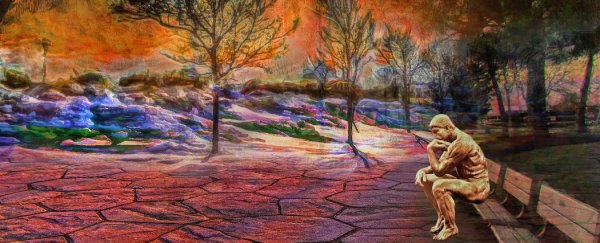If you're going to pen a best-selling novel or paint a watercolour masterpiece, the way you're feeling can have as much of an impact as your natural talent. Turns out the stereotype of the tortured artist may have some truth in it, research has found, because mixed emotions appear to encourage creativity more than total happiness or utter sadness.
A review of several studies investigating the link between a person's mood and creativity has found that creative people have greater connections between competing areas of the brain - specifically, those responsible for strong focus and imaginative spontaneity. When both of these contrasting states can be successfully blended and held in balance, the greatest levels of creativity occur.
"Whether it's [mixing] open attention with a focused drive, mindfulness with daydreaming, intuition with rationality, [or] intense rebelliousness with respect for tradition… creative people have messy minds," writes American psychologist Scott Barry Kaufman, who summarises the findings in the Harvard Business Review. Being able to link two emotional states together - referred to as "mixed emotions" - is similar to linking disparate ideas together as well, he says, which is the basis of being creative. After all, most creative geniuses can be spotted by their tendency to make associations the majority of us wouldn't be able to imagine.
Not only do you need the right kind of mental dexterity to kickstart creative thinking, a report from earlier this year discovered that being open to deep and intense emotions was preferable for creative types than simply feeling happy or sad. That backs up another recent study on the topic, carried out by psychologists Eddie Harmon-Jones and Tom Price of the University of New South Wales (UNSW) in Australia and Philip Gable from the University of Alabama in the US, which found that the "motivational intensity" of emotions are most important where creativity is concerned - again irrespective of whether those emotions are positive or negative.
Motivationally intense emotions make you want to do something: fear, stress, desire. Lower intensity emotions are more passive: gratitude, amusement, and sadness. If you want to be firing on all your creative cylinders, then you need to cultivate the former group of emotions - try writing a horror story right after you've seen a ghost, perhaps. The latter group of feelings, on the other hand, tend to give your brain a better perspective and help you see the bigger picture more readily.
Kaufman suggests that an unusual environment can help foster emotional ambivalence and tease out creative associations too - hence the kind of quirky office decorations found at some of the world's most forward-thinking companies. This being the Harvard Business Review, he ties everything back to the idea of employee creativity.
"Taken together, the latest research on the role of emotions in creativity suggests that instead of focusing exclusively on bringing out positive emotions among employees - or attempting to dispel negative emotions - managers may want to consider additional factors, such as whether the environment brings out emotional ambivalence… and motivational intensity… when trying to stimulate creativity," he concludes.
